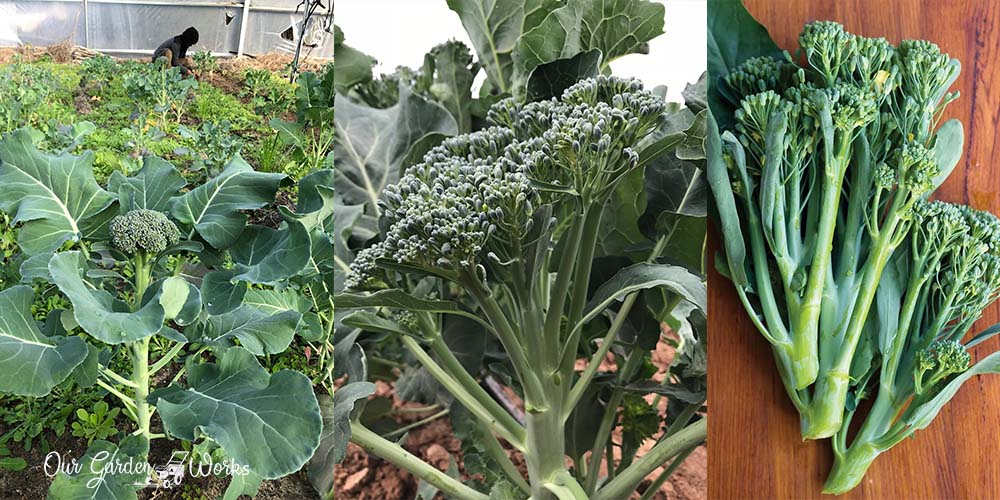One of the joys of gardening is to grow some unique and unpopular vegetables like broccolini.
If you’re into some adventure or plainly looking for a new vegetable, growing broccolini from seed is a good option to try. They have almost the same growing requirements as broccoli and very few differences.
Broccolini is a perfect alternative for short growing seasons. It can also give you another round of harvest if you plant them early in the season.
As a common sight in the fine dining scene, broccolini is something you can grow as food or be the source for your local community.
(You could use the table of contents below to jump to the sections that are most important to you.)
What is a Broccolini?
Broccolini is a hybrid variety of broccoli with small florets that looks similar to broccoli. It is a blend of both American broccoli and Chinese kale called Gai Lan.
In case you’re wondering, it’s naturally occurring and has been a successful product of horticultural research and innovation between cultivars of Brassica oleracea.
Broccolini is a naturally cross-bred vegetable that you can grow from seed or transplants. It holds the good features of its parents such as the green and round florets and the slender stalks from the Chinese kale.
Broccolini is a trademark name and its kind can be named differently by other seeding companies. The confusion on the name has been its weakest feature because most people are confused about what to call them as a group.
Take for example this scenario wherein broccolini® is the name given by the first company to develop them which is Mann Packing Company.
Synergene Seed & Technology in Salinas, California also crossed the same parent vegetables and named it sweet baby broccoli. So, this vegetable variety has the same parents and same qualities with different names
If you’re going to buy broccolini seeds online, you will be overwhelmed with several terms used to name this rare vegetable, such as:
- Aspabroc
- Asparation (Sanbon Inc.)
- Tenderstem
- Baby broccoli
- Bimi
- Broccoletti
- Broccolette
- Sprouting broccoli
- Brokali
- Sweet baby broccoli (Synergene Seed & Tech)
Due to its limited supply in the market, broccolini costs higher than your usual broccoli. It is also the reason why it’s only available in the upscale market and fine dining restaurants. It is even dubbed as a gourmet vegetable.
So, imagine how a rare gardener you can be if you start growing this delicious vegetable in your garden.
Broccolini Varieties That You Can Grow
Even hybrids like broccolini have varieties. If you want to grow them. Due to the several experiments in cross-breeding broccoli and Chinese kale, new varieties have emerged. These include:

(1) Apollo is a variety known as a heavy producer. It grows 24 to 28 inches tall and wide. It continues to produce side shoots after the main head has been harvested, providing a consistent supply throughout the growing season.
The Apollo variety is extra sweet and has tender stalks perfect for salads. This variety is a heavy feeder, so you may need to fertilize it more than usual. It is also tolerant and quick to grow at a cool temperature.
Here are some of its growing information:
- Soil temperature for germination: 55°F to 75°F
- Germination period: 5 to 17 days
- Seed depth: ¼ of an inch
- Seed spacing: 4 to 6 inches
- Row Spacing: 18 to 36 inches
- Days to maturity: 50 to 60 days
- Light requirement: Full sun

(2) Atlantis is another variety from the Brokali breed aside from Apollo. It is also a heavy producer that will make you think you’re having a small broccoli head for each floret.
Atlantis variety has a sweet and crisp taste that ranges between the taste of broccoli and asparagus. It does not require pinching to achieve a better yield. You can start them indoors and grow multiple batches from spring to fall.
Here are its other growing requirements:
- Soil temperature for germination: 55°F to 85°F
- Germination period: 7 to 10 days
- Seed depth: ¼ of an inch
- Seed spacing: 18 to 24 inches
- Row Spacing: 30 to 36 inches
- Days to maturity: 33 days
- Light requirement: Full sun
- Season: Cool season
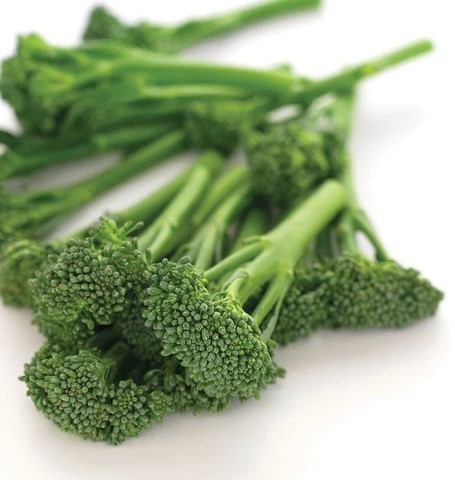
(3) Broccolini™ (Aspabroc) is the first bred variety by Sakata Seed Company and Mann’s. It has a subtle sweetness and peppery taste that gets more enhanced when cooked. Broccolini is the brand that is sold in local markets in Northern and Central America for years distributed by Mann’s and Sakata.
Here are its other growing details:
- Soil temperature for germination: 50°F to 85°F
- Germination period: 7 to 10 days
- Seed depth: ¼ of an inch
- Seed spacing: 18 to 24 inches
- Row Spacing: 30 to 36 inches
- Days to maturity: 50 days
- Light requirement: Full sun
- Season: Cool season

(4) Royal Tenderette is a multi-stemmed variety often referred to as broccoli variety in the market. Unlike other varieties, it has a sweet and crunchy taste that is best eaten raw and dipped in various sauces. It produces a lot of florets, provides 2 to 3 harvests within a month, and is the best option to grow in containers.
Here are the other growing details for this variety:
- Soil temperature for germination: 50°F to 85°F
- Germination period: 12 to 14 days
- Seed depth: ¼ of an inch
- Seed spacing: 18 to 24 inches
- Row Spacing: 30 to 36 inches
- Days to maturity: 50 to 60 days
- Light requirement: Full sun
- Season: Cool season
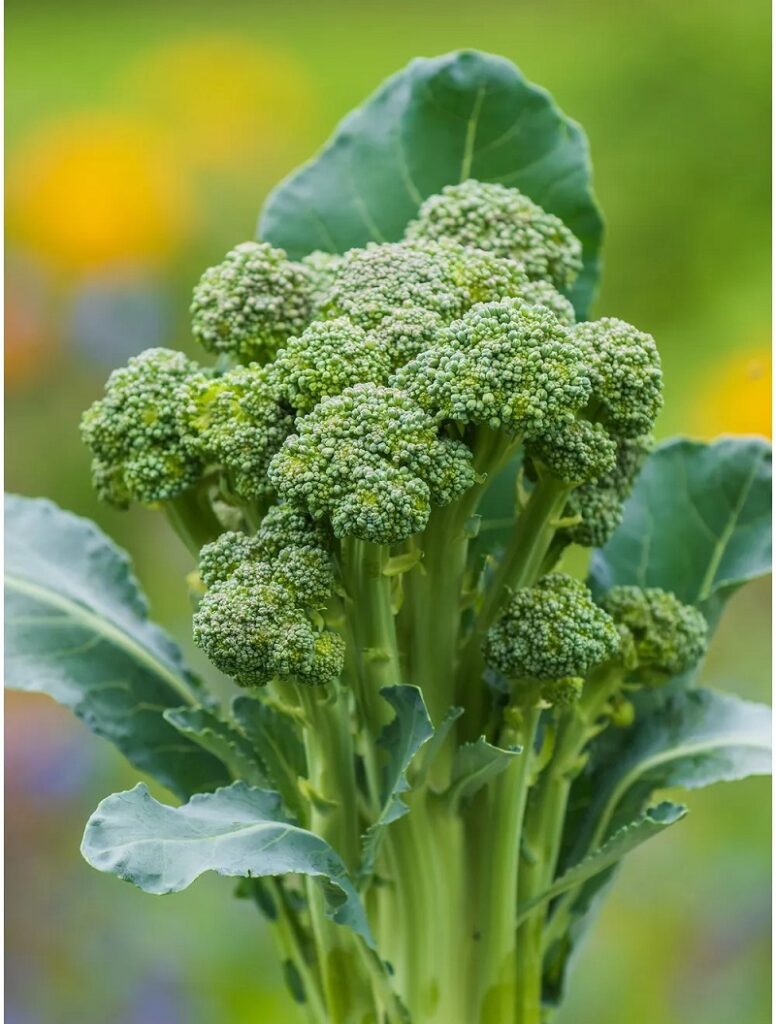
(5) Montebello is another broccolini variety that has an earthy sweet taste. It is best roasted, steamed, or sautéed. It’s best harvested during late summer and fall.
Here are the other details in growing this variety:
- Soil temperature for germination: 70°F
- Germination period: 10 to 21 days
- Seed depth: ¼ of an inch
- Seed spacing: 18 to 24 inches
- Row Spacing: 2 feet
- Days to maturity: 70 to 75 days
- Light requirement: Full sun
- Season: Cool season
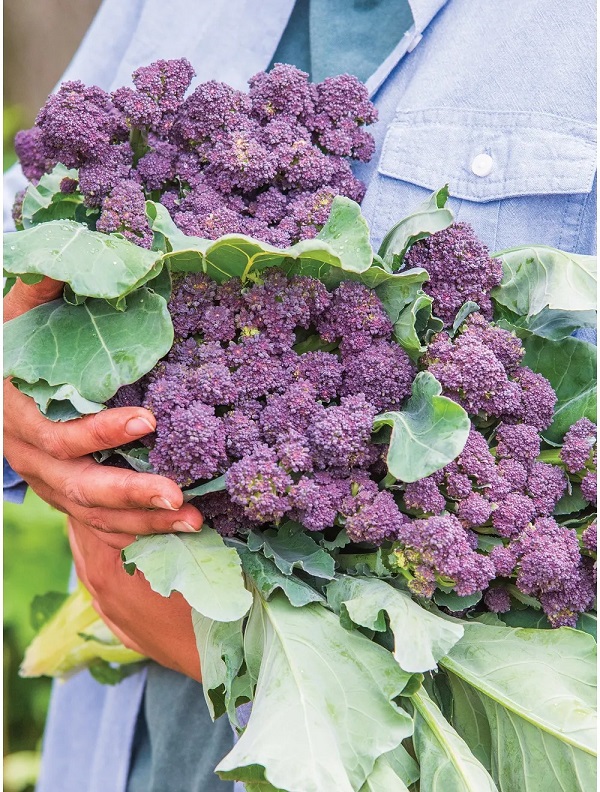
(6) Burgundy is a broccolini variety that stands out due to its purple florets. It has a sweet flavor and crunchy stems, perfect for any type of cooking.
Here are other growing details about this vegetable variety that looks like a flower:
- Soil temperature for germination: 70°F
- Germination period: 10 to 21 days
- Seed depth: ¼ of an inch
- Seed spacing: 18 to 24 inches
- Row Spacing: 2 feet
- Days to maturity: 37 to 45 days
- Light requirement: Full sun
- Season: Cool season
Best Growing Conditions For Broccolini
Broccolini is a cool-season vegetable that has the same growing requirements as broccoli. The only distinct difference that it has with broccoli is it comes with florets than heads and its stems and leaves are edible. Due to its kale features, the leaves, and stems can be cooked and consumed like kale.
Every variety of broccolini has its specific growing requirements but they all lie in the same range.
Here are the best growing conditions for growing broccolini from SEED:
- Soil requirements: Moist but well-draining soil with a pH level of 6.0 and 7.0.
- Temperature requirements: 50°F to 85°F
- Germination period: 7 to 21 days depending on the variety
- Lighting requirements: Full sun
- Water requirements: 1 to 2 inches per week
- Days of maturity: 33 days to 75 days
Planting The Broccolini Seeds
Broccolini seeds are started indoors for 4 to 6 weeks and transplanted into the ground. Take note that not all broccolini varieties have a uniform germination period. Refer to the label of your broccolini seeds.
Also, most broccolini varieties have an average of 80% germination rate, so you may put 2 seeds in one seedling tray hole.
Here’s how you can start germinating indoors.
Materials:
- Compost
- Seedling tray
- Shovel
- Potting mix
- Misting spray with water
Directions:
- Mix a few cups of compost with your unfertilized soil mix. If your soil mix already contains fertilizer in it, you may refrain from adding compost.
- Add the potting mix to the seedling tray.
- Using a stick, poke the soil with a shallow hole that is about ¼ of an inch.
- Put the seeds in the hole. Then, grab a handful of potting mix and lightly sprinkle it over the holes.
- Mist the newly planted seeds lightly to avoid washing away the seeds.
- Keep watering them every week or when the soil is too dry.
- It takes about 10 to 21 days or more for the seeds to germinate. When the seedlings reach 3 to 4 inches tall, place them in a sunny location in your home. If you are using a growing light, expose them to light for 16 hours a day and let them rest for 8 hours.
- When they start to grow 3 to 8 leaves, you may start hardening them before transplanting. Expose the seedling tray in outdoor conditions under a partial shade for 5 to 7 days.
Transplanting Broccolini
- Prepare the in-ground soil by adding compost and organic matter. Make sure that the soil pH is around 6.0 to 7.0 and the soil is well-draining and aerated.
- Transfer the seedlings at a distance of 1 to 2 feet apart.
- Water the transplants lightly and cover them with 1 to 2 inches of mulch.
Fertilizing Broccolini
As a heavy feeder, broccolini needs a steady supply of nutrients. Three weeks after transplanting them, spray compost tea or add a low-nitrogen fertilizer to your broccolini plants. It is not too demanding to fertilizer but will love an occasional feeding from time to time.
The roots will fail to get nutrients from the soil when the soil pH goes beyond 6.0 and 7.0. If the soil becomes too acidic, you may add wood ash on top of the soil. However, if it’s too alkaline, you may use soil acidifiers like elemental sulfur.
Pinching or Pruning Broccolini
Pinching or tipping is a pruning method to encourage branching and the development of new shoots. As for broccolini, it delays flowering and encourages the growth of new edible shoots.
Most varieties like Atlantis do not require pinching. Unlike broccoli, pinching can be optional for broccolini, most of the time, since there is no big broccoli head that needs to be developed.
Pest and Disease Control
Like most plants, broccolini can also be a victim of fungal diseases and pest infestations.
For general pest and disease control, it is recommended that you spray your broccolini with diluted neem oil once they are transplanted.
Here are some of the common diseases to look out for:
Alternaria leaf spot is a fungal disease common to cole varieties that manifests as small reddish-brown spots on the leaves. It also affects the tender stems of broccolini and causes them to wilt.
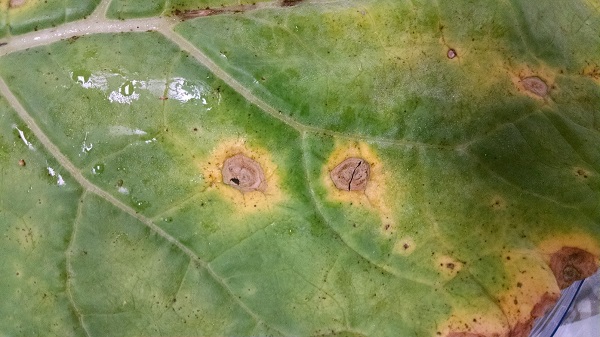
The spores of this disease often breed and multiply during hot and humid weather and transfer through water splashes and air.
Clubroot is a fungal disease in the soil that causes the roots of plants in the Brassica family to swell. The swelling prevents the normal absorption of nutrients and moisture in the soil. This disease can cause stunted growth and wilt patches the leaves of your broccolini.
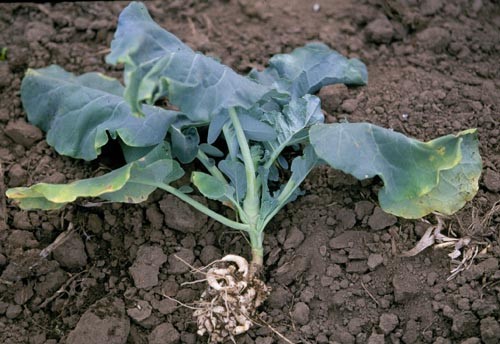
Damping-off is a common fungal disease among seedlings where they start to wilt for unexplainable reasons. It is caused by a fungus that is rampant when there’s too much moisture, changes in temperature (below 68 F), and nitrogen in the soil.
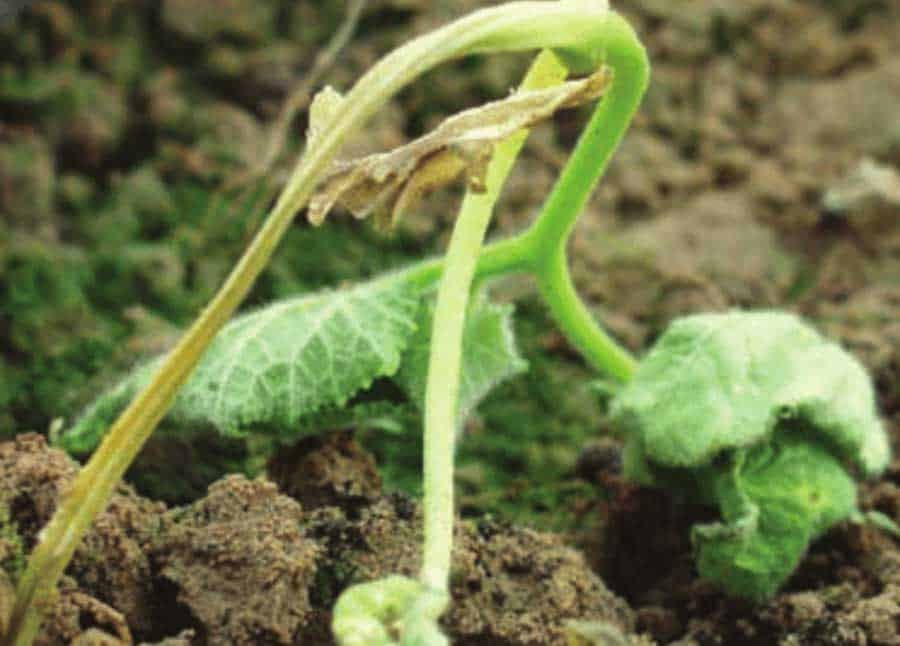
Downy Mildew is a fungal disease that causes whitish to grayish patches on both sides of the leaves. It is highly damaging and can even kill seedlings.
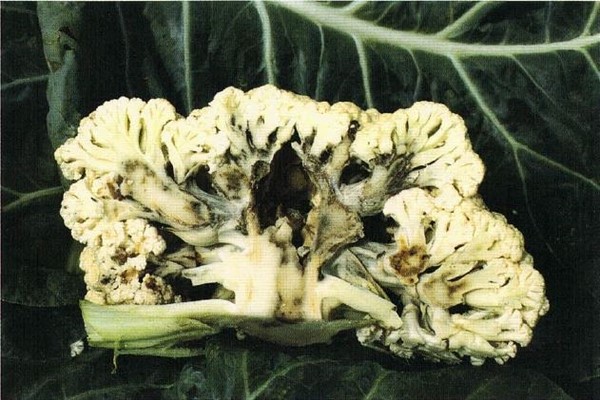
The pathogens and spores of this disease spread when the temperature reaches 50 to 59ºF. In broccoli and broccolini varieties, the heads and florets can also be infected, causing black and grayish patches.
White blister (Albugo candida) is another infectious disease in the Brassica family. It causes white blisters on the leaves, florets, and heads of broccoli varieties and hybrids, which contain spores.
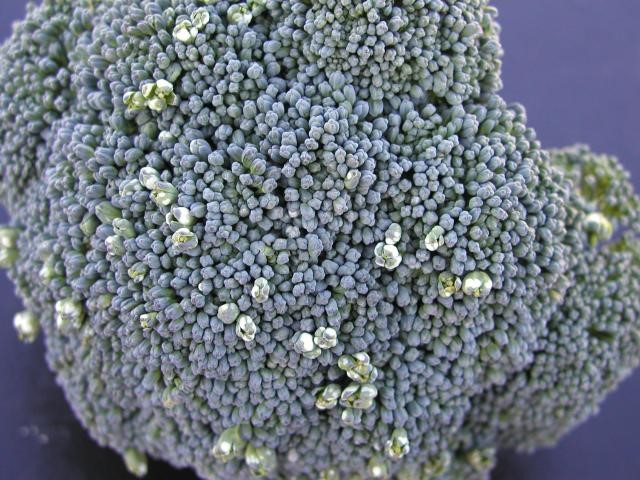
Several pests can damage your broccolini during their growing period. These include the following insects and larvae:
Aphids are small sap-sucking insects that love to feast on crunchy and tender stems of broccoli varieties. They come in different colors such as white, green, red, black, or peach.
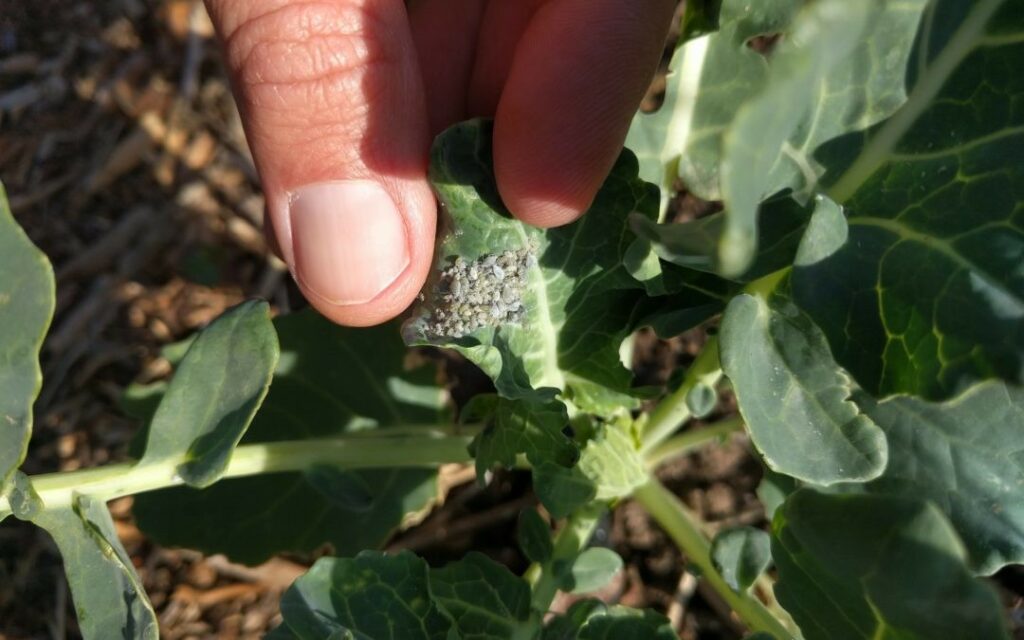
Heavy infestation of aphids can cause dehydration in plants. They also leave a sticky residue on the leaves which can attract other insects and even cause fungal disease.
Cabbage loopers or worms are inch-sized green worms with white stripes on their sides. They can bore holes on the leaves, heads, and florets of cabbage and broccoli varieties These worms can leave your broccolini with mangled leaves and veins barely living.
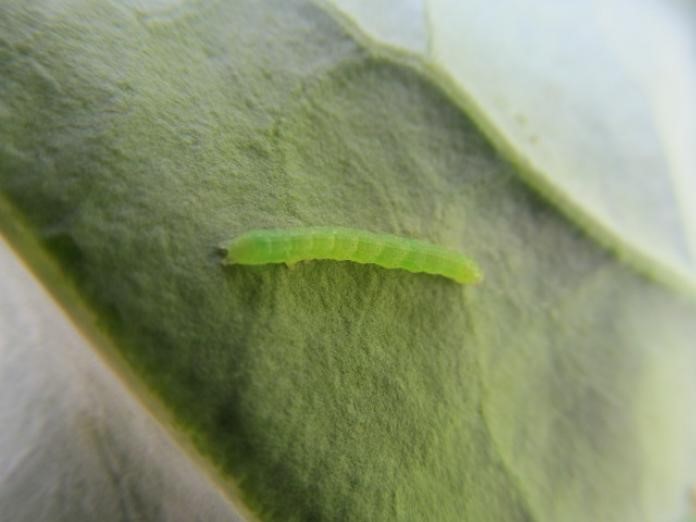
Flea Beetles are small black beetles that feed on the foliage of broccoli and other vegetable varieties. They can overwinter in plant debris and overwhelm sprouting plants as soon as the spring comes.
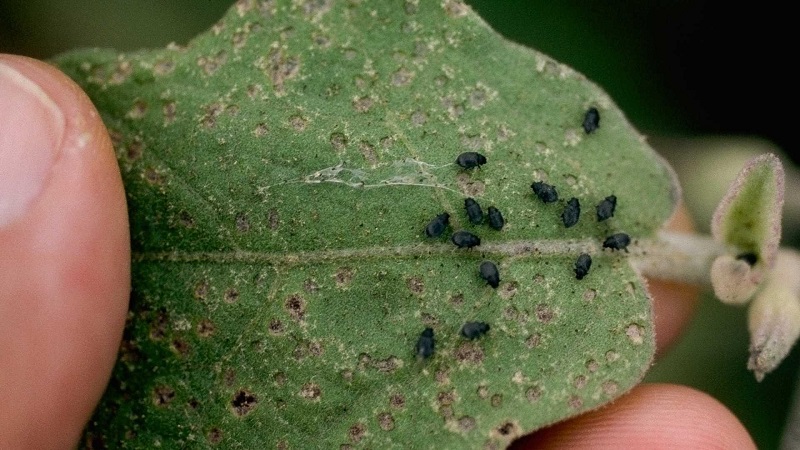
Leafminers are sneaky little insects that bore the leaves from the inside creating maze-like tunnels. You can’t see them on the surface since they are underneath the outer layer of the leaves.
They do not cause life-threatening damage to broccolini but can affect the photosynthesis and development of florets.
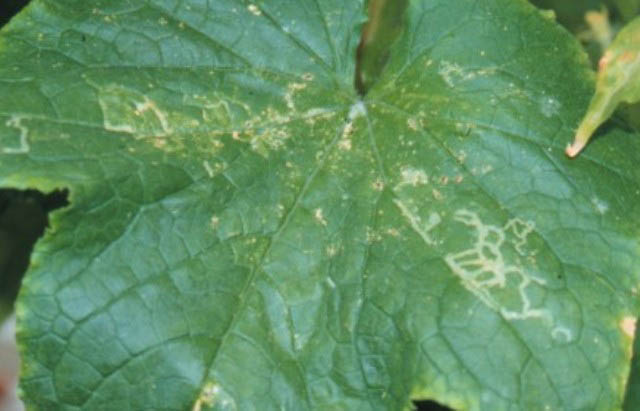
Slugs are slow but deadly pests in cole varieties of vegetables. They feed on the leaves leaving large holes which can eventually cause them to wilt. Slugs attack at night so you may set traps to keep them off your broccolini.
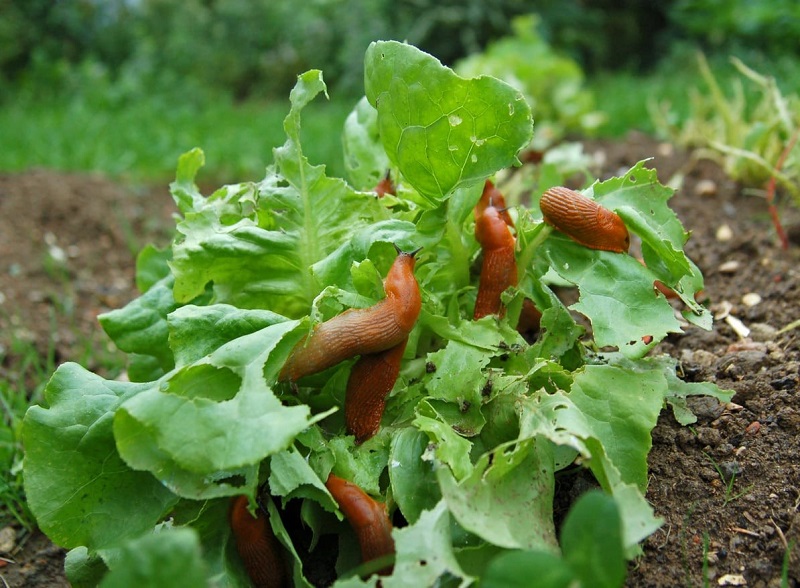
Harvesting Broccolini
To get the best flavor from your broccolini, make sure that you harvest them before the florets turn yellow. You can harvest the florist as soon as they emerge so you can get another batch of harvest.
The maturity days of every variety are all different. So, make sure to refer to the instructions on the label of your broccolini seeds. Every piece of broccolini is edible because its leaves take after its kale features and the florets take after its broccoli features.
Do You Cut The Stems of Broccolini?
Unlike broccoli, the stems are harvested along with the florets. The tender stems are as tasty as the florets and can be included in dishes. The flavor of the stems comes out when they are grilled or roasted.
How To Store Broccolini?
Store your broccolini in your fridge without putting them in a sealed bag. Also, try to dry them first because moisture left in the florets can cause them to rot faster.
You may put them in a salad spinner to get rid of the extra water faster. They can last in the fridge for 5 to 7 days.
Tips in Growing Broccolini
- You may harvest the main head first to encourage side shoots to grow for a continuous harvest until fall.
- Florets with 1 to 2 inches width are ready for harvest right before they flower or wilt.
- Avoid foliar watering to avoid attracting fungal diseases and pests.
- Always apply preventive fungal and pest control like neem oil or insecticidal soap.
- Make sure to harden the broccolini for a few days before you transplant them in the ground.
Frequently Asked Questions (FAQs)
What is the difference between broccoli and broccolini?
Broccolini does not have a large head and tastes sweeter than broccoli. The leaves and stems of broccolini are also edible since it is a hybrid of Chinese kale and broccoli. Some varieties of broccolini also do not require pinching.
Is broccolini the same as broccoli rabe?
They may look similar but broccoli rabe is not related to the broccoli family. It is more closely related to turnips. It has a slightly bitter taste, unlike broccoli and broccolini.
Why is broccolini so expensive?
Broccolini is expensive because there’s a limited supply. It is not widely propagated due to a lack of standard growing resources to grow them on a larger scale.
There is also some issue with the popularity of this vegetable since it has been named under several terms which confuses many gardeners and consumers alike.
How long do you steam broccolini?
You can steam broccolini for 3 to 5 minutes. If you want the stems to be softer, wait until 5 minutes before turning off the heat. However, you may also achieve a slightly crunchy texture if you steam it for 3 minutes.
What do you eat broccolini with?
It is often sauteed with garlic and olive oil and seasoned with salt and pepper. It is pretty much cooked like broccoli or asparagus due to its tender stems.
What part of broccolini do we eat?
Other than the roots and the tough base stem, you can eat the stems, leaves, and florets. It’s a versatile vegetable that you can grill, roast, steam, stir-fry, and add to your salads.
What is the nutritional value of broccolini?
Broccolini is rich in the following vitamins and minerals, such as:
- Vitamin C
- Vitamin A
- Vitamin E
- Calcium
- Folate
- Iron
- Potassium
How do you clean broccolini?
The best way to clean broccolini is to soak it in vinegar-water solution for a few minutes. As you lift the broccolini, you will see the small insects that are hiding in the florets. Rinse it with clean water afterward.
What are the health benefits of broccolini?
Broccolini is high in fiber which helps promote good digestion. It is also filling which can help you feel full easily without consuming too many carbohydrates. Calcium and magnesium can also help lower your blood pressure and improve your heart health.
What does a broccolini taste like?
Broccolini tastes sweet with a hint of peppery taste. However, the overall taste varies with every variety. Some may taste sweeter and some have a more earthy taste.
Final Thoughts
Growing broccolini from seed can level up your skills in gardening since it is a rare vegetable.
You can possibly be the first producer of broccolini in your local area. Who knows you might end up loving this vegetable for its taste and earning potential.
We hope that this post has helped you learn more about the delicious baby broccolis. If you find this post informative, please don’t forget to share it with your friends.
Happy gardening!
